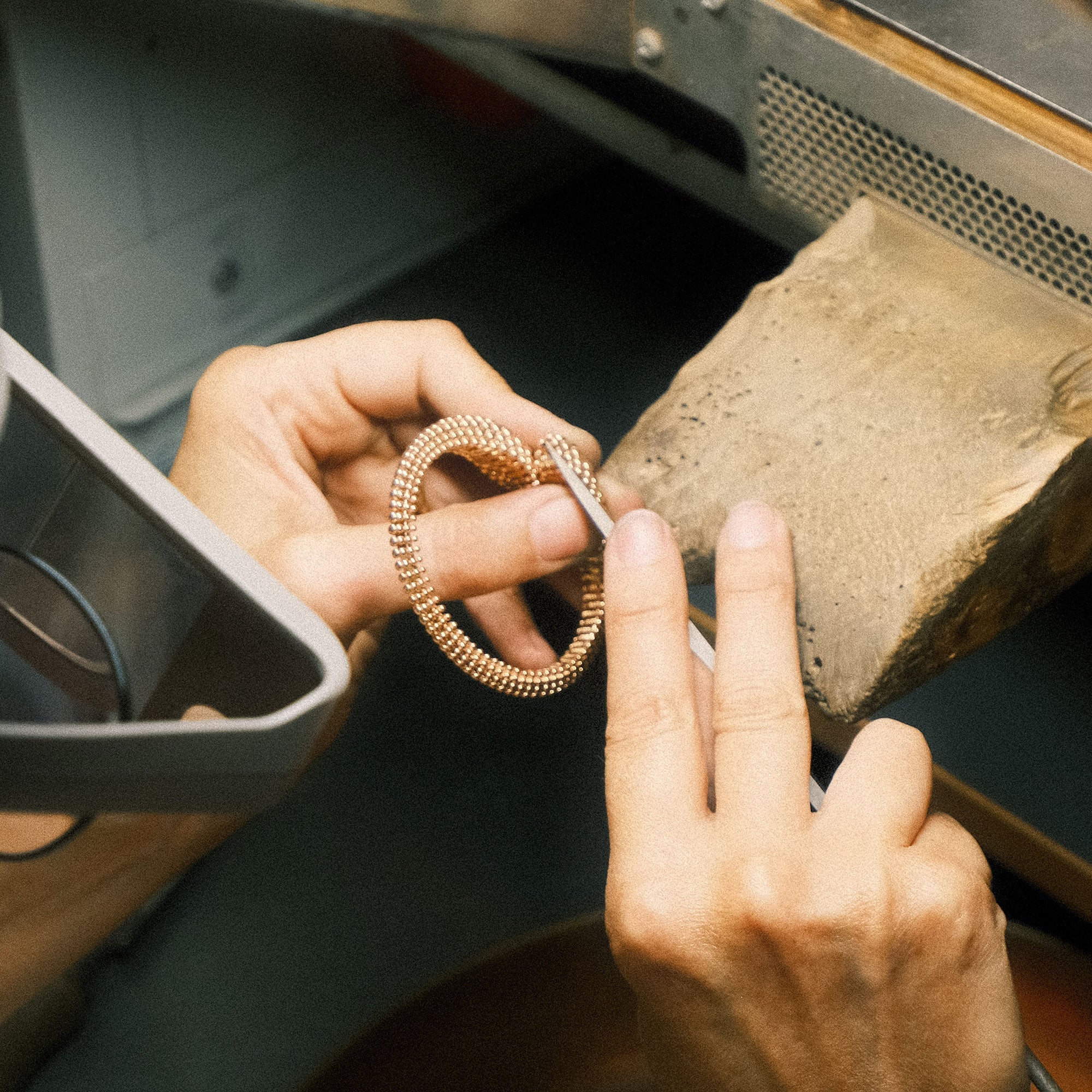
Beyond the Sparkle: The Three Essential Questions You Must Ask When Buying Luxury Gold and Diamond Jewellery
The allure of gold and diamond jewellery is ageless. Their brilliance captures our imagination, often symbolising love, commitment, and enduring value. But venturing into the world of luxury jewellery can be daunting. How do you ensure you’re making an informed purchase, getting the quality you deserve, and avoiding potential pitfalls? Forget the dazzling displays and persuasive sales pitches for a moment. Instead, focus on asking the right questions. Here are three essential enquiries that will empower you to make a confident and satisfying choice.
1. Where was this piece made?
This might seem straightforward, but it’s often the most misunderstood question. Some people might proudly proclaim a brand’s origins based on its headquarters or history. “It’s Italian,” they might say, or “This is a French design.” While the design inspiration may stem from those regions, manufacturing could occur elsewhere.
Why does this matter? Simply put, knowing the true origin of manufacturing allows for transparency and helps you assess the craftsmanship. For example, Arezzo, Vicenza, and Florence are known for their jewellery craftsmanship in Italy. A piece manufactured in a region known for skilled artisans will contain specialised expertise that is not necessarily evident in mass-produced items. For instance, there’s nothing inherently wrong with jewellery made in Thailand, but you deserve to know the truth. The key is to ask specifically, “Where was this piece manufactured?” This subtle shift in wording will invite a more accurate response.
2. Natural or synthetic diamonds? Understanding the difference and the 4Cs
Diamonds are a marvel of nature, but the market now offers a choice: natural or synthetic (lab-grown) diamonds. Understanding the difference is fundamental to your purchase.
Natural diamonds: Formed through billions of years deep inside the Earth, these diamonds are mined and have a unique, natural history. Their rarity and natural formation contribute to their value.
Synthetic diamonds: These high-tech sparklers are made in a laboratory. Advanced technology ensures their chemical composition and physical properties are the same as those of natural diamonds. Nevertheless, the difference lies in their origin and perceived value. Due to their finite supply and natural formation, natural diamonds command a higher price, while synthetic diamonds are more affordable.
Once you know where the diamond comes from, you can learn about its quality using the 4Cs:
- Cut: Refers to the diamond’s proportions, symmetry, and polish, which determine its brilliance and sparkle.
- Clarity: Measures inclusions (internal flaws) and blemishes (external flaws). Fewer inclusions and blemishes result in higher clarity.
- Colour: Refers to diamonds graded on a scale from colourless (D) to yellow (Z). Colourless diamonds are the most valuable.
-
Carats: Represent the diamond’s weight, with one carat equalling 200 milligrams. Larger diamonds are generally more expensive.
Understanding the 4Cs allows you to assess the diamond’s quality and value, ensuring you get what you pay for.

3. What is the gold standard? Karats explained
Karats are the unit of measure for gold’s purity. (Carats apply to gemstones.) Pure gold is 24 karats, meaning it’s 100% gold. However, 24-karat gold is too soft for most jewellery applications. Therefore, it’s alloyed with other metals to enhance its durability
- 18k gold: The most common choice for luxury jewellery, 18k gold contains 75% pure gold (18 parts gold, six parts other metals). It balances purity, durability, and a rich, warm colour.
- Yellow gold is the traditional colour achieved by combining gold with silver or zinc.
- White gold is an alloy of gold with white metals like nickel, palladium or silver, giving it a silvery-white hue.
- Rose gold is an alloy of gold with copper, resulting in a pink or reddish hue.
Choosing the correct gold karat depends on your preferences and lifestyle. Why is 24k gold rarely used? Its softness makes it vulnerable to scratches and dents, making daily wear impractical. International jewellery brands favour 18k gold because of its luxurious appearance and durability.
Beyond the basics: essential considerations for peace of mind
While these three questions are essential, this is just the beginning. Here are some other considerations to ensure a well-rounded purchase:
- Guarantees and certificates: Does the gold and diamond jewellery come with a lifetime guarantee or a certificate of authenticity? Documents like these confirm quality and protect your investment.
- Coloured stones: If the piece features coloured gemstones, ask about their origin, whether they’re natural or treated, and their quality. Traceability is key. Knowing where a gemstone comes from ensures responsible sourcing and ethical practices.
- Handmade vs mass-produced: Handmade jewellery often reflects superior craftsmanship and unique artistry. Mass-produced items might be more affordable but lack the same detail and individuality.
- Responsible sourcing: Ethical considerations are essential in today’s world. Ask about the brand’s sourcing practices. Are their diamonds conflict-free? Is their gold responsibly mined? Transparency and traceability are crucial for responsible consumerism.

A model for sustainable luxury
Traceability in luxury jewellery means tracking a piece from its origin to the final product. Responsible sourcing refers to materials procured ethically and sustainably, minimising environmental and social impact. This approach includes fair labour practices, environmental protection, and conflict-free sourcing.
In a world increasingly conscious of its environmental footprint, brands prioritising sustainability are leading the way. Take, for example, FerriFirenze’s approach. Each gold and diamond jewellery piece is handmade by artisans in a Renaissance villa in Florence, which the brand has helped to restore. Reducing the house’s carbon footprint is a top priority. In addition, FerriFirenze ensures the longevity of each product with lifetime guarantees and free repairs and upholds values such as transparency behind material sourcing. The house demonstrates a commitment to ethical practices, which resonates with clients who seek beautiful jewellery and a sense of responsibility and purpose in their purchases.
When considering your jewellery purchase, ask about the brand’s sustainability initiatives. Enquire about their sourcing practices, support for local artisans, and efforts to minimise their environmental impact. Choosing sustainable brands contributes to a more ethical and responsible jewellery industry.
Buying gold and diamond jewellery should be a joyful and memorable experience. Don’t be afraid to ask questions. Knowledge is powerful and helps you invest wisely in a piece that will last for generations. Stay tuned as we share more insights to guide your journey into the fascinating world of luxury jewellery.



